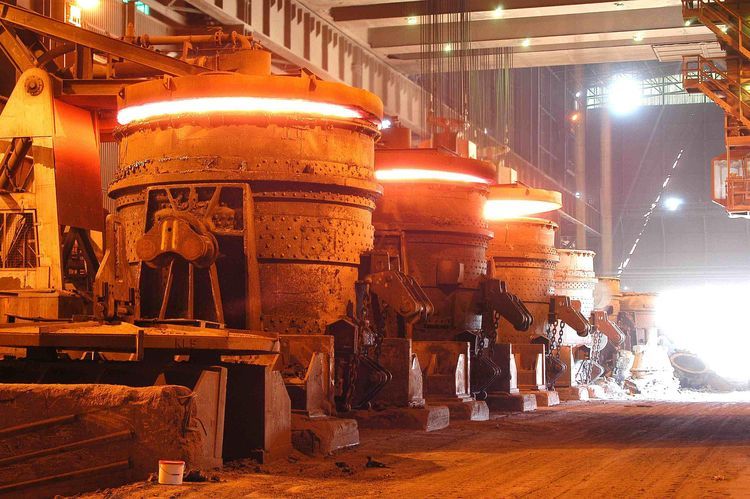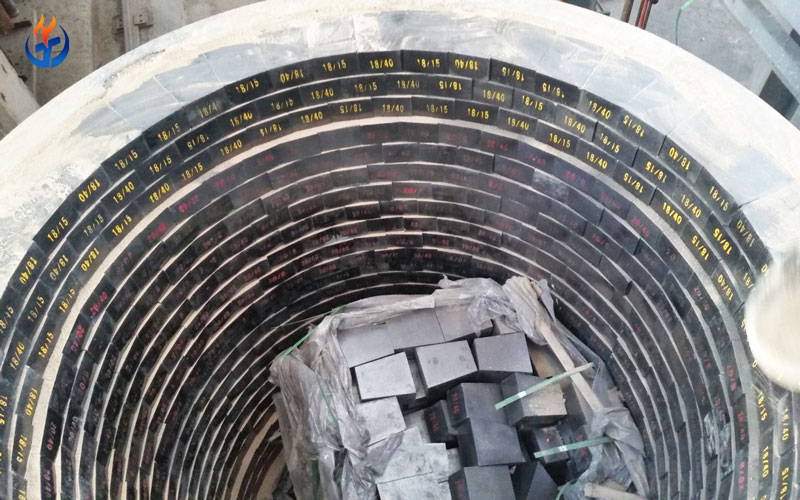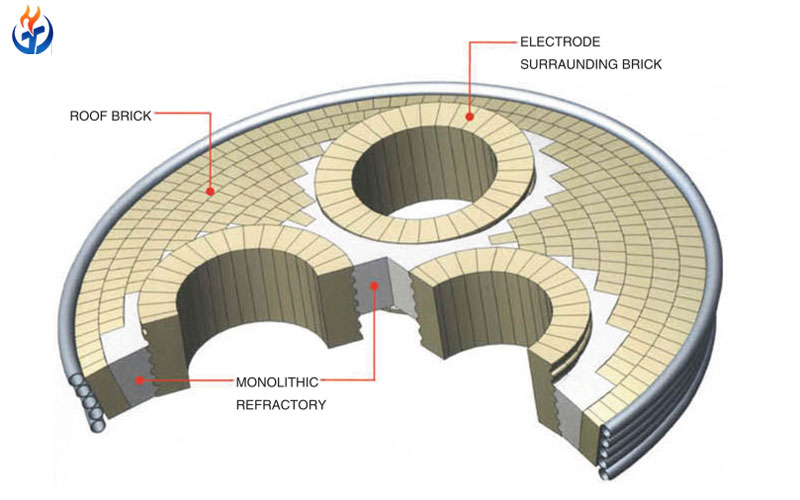In the field of metallurgical industries, the performance and efficiency of a furnace heavily depend on the quality of its refractory lining. Basic refractory materials play a crucial role in ensuring the durability, safety, and operational efficiency of furnaces used in steelmaking, non-ferrous metal production, cement, and chemical industries. They are specifically designed to withstand high temperatures, chemical corrosion, and mechanical wear. This article will explore the various types of basic refractory material in furnace, their compositions, applications, and advantages.
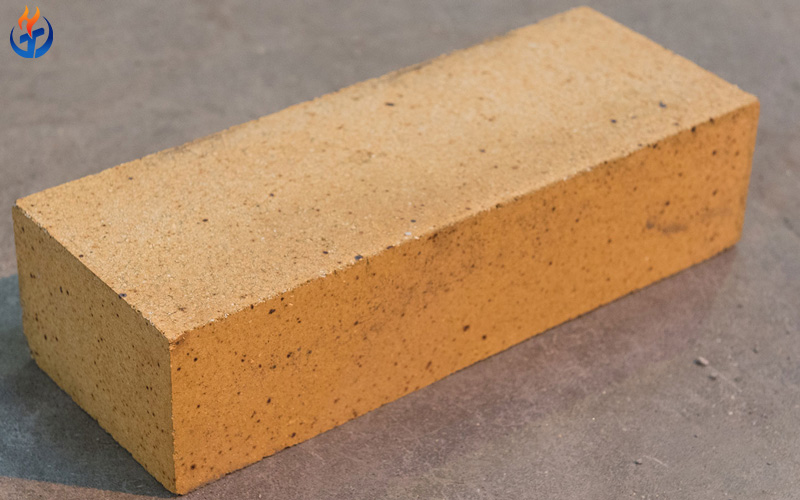
What Are Basic Refractory Materials?
Basic refractory materials, also known as base refractories, are materials that are chemically alkaline in nature, usually consisting of compounds such as magnesia (MgO), dolomite (CaO·MgO), and chrome-magnesite. These materials are designed to resist the corrosive effects of basic slags, which are commonly found in steelmaking processes.
Unlike acidic refractories such as silica bricks, basic refractories are not suitable for environments where acidic slags predominate. Their high chemical resistance to basic environments makes them ideal for basic lining of induction furnaces, electric arc furnaces (EAF), and ladles.
Key Features of Basic Refractory Materials:
High Thermal Stability: Can withstand temperatures up to 2000°C in some applications.
Chemical Resistance: Resistant to basic slags and molten metals.
Mechanical Strength: High compressive strength to bear furnace loads.
Thermal Shock Resistance: Can tolerate rapid temperature changes without cracking.
Types of Basic Refractory Materials
There are several types of basic refractory bricks and materials used for constructing the basic lining of induction furnaces. These can be categorized based on their composition and applications:
1. Magnesia Bricks (MgO Bricks)
Magnesia bricks are the most widely used basic refractory bricks. They primarily consist of magnesia (MgO) and are known for their high melting point, excellent thermal conductivity, and resistance to basic slags.
Properties:
Refractoriness: 2800–2850°C
High resistance to slag corrosion
Excellent thermal shock resistance
Can be used in combination with spinel (MgAl2O4) for improved performance
Applications:
Induction furnace linings
Ladles for molten steel
Electric arc furnace hearths
Converter linings
Advantages:
Long service life under high-temperature and corrosive conditions
Minimal contamination of molten metals
2. Magnesia-Carbon Bricks (MgO-C Bricks)
Magnesia-carbon bricks are enhanced versions of magnesia bricks with the addition of carbon, typically in the form of graphite or pitch. This combination significantly improves the bricks’ resistance to thermal shock and chemical attack.
Properties:
High mechanical strength
Excellent thermal shock resistance
Resistant to erosion by molten metals and slags
Applications:
Electric arc furnace bottom and side linings
Ladles and tundishes
Areas of high wear and thermal stress in steelmaking furnaces
Advantages:
Longer operational lifespan compared to pure magnesia bricks
Reduced maintenance frequency
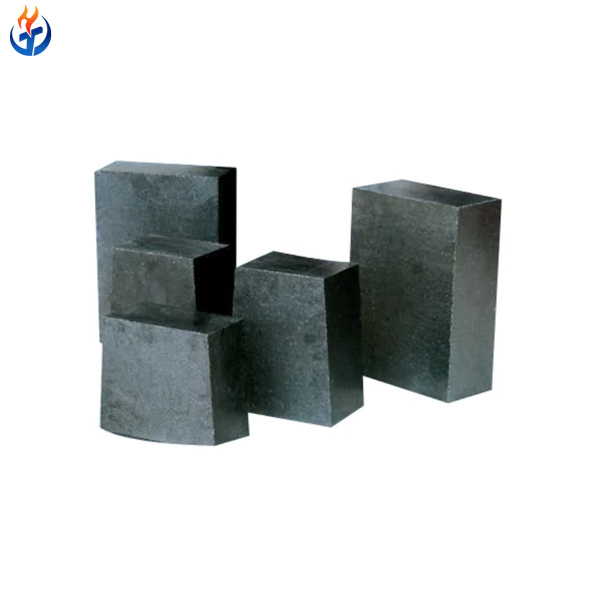
3. Dolomite Bricks
Dolomite bricks are made from natural dolomite (CaO·MgO) and are often used in areas where slag interaction is less aggressive compared to steelmaking. Dolomite bricks can be sintered at high temperatures to increase density and strength.
Properties:
High refractoriness: 2000–2200°C
Good slag resistance in basic environments
Thermal expansion similar to magnesia bricks
Applications:
Linings of open-hearth furnaces
Ladles for non-ferrous metals
Cement rotary kilns
Advantages:
Cost-effective compared to magnesia bricks
Good performance in medium-temperature applications
4. Chrome-Magnesite Bricks (Cr-Mg Bricks)
Chrome-magnesite bricks are composed of magnesia and chromium oxide (Cr2O3). The chromium improves chemical resistance and mechanical strength, making these bricks suitable for high-stress applications.
Properties:
High resistance to wear and slag erosion
Excellent thermal stability up to 1800–2000°C
Can handle heavy molten steel flows
Applications:
Electric arc furnace sidewalls and bottoms
Ladles for molten steel
Converter linings
Advantages:
Improved durability under heavy slag attack
Enhanced thermal shock resistance compared to traditional magnesia bricks
5. Spinel-Containing Bricks
Spinel-containing basic bricks are magnesia-based refractories with a small percentage of alumina to form magnesium-aluminum spinel (MgAl2O4). The spinel phase enhances resistance to slag penetration and chemical attack.
Properties:
Excellent corrosion resistance
Improved mechanical strength
Thermal shock resistance is better than standard magnesia bricks
Applications:
High-temperature zones of EAF and induction furnaces
Ladles and tundishes for long-term molten metal handling
Advantages:
Prolonged service life
Reduced maintenance downtime
Forms of Basic Refractory Materials
Basic refractory materials are available in multiple forms, depending on their intended applications and installation methods:
Basic Refractory Bricks – The most common form, used for furnace walls, bottoms, and lining.
Castables – Pre-mixed materials that can be cast into molds or installed by gunning, ideal for complex furnace shapes.
Ramming Masses – Loose materials compacted into place using rammers, suitable for repair work or lining irregular surfaces.
Monolithic Refractories – A broad category including castables, ramming mixes, and gunning mixes, allowing seamless linings with fewer joints.
Application of Basic Refractories in Induction Furnaces
Induction furnaces, widely used in steel and non-ferrous metal production, require basic lining materials to handle high temperatures and molten metal corrosion. Magnesia and magnesia-carbon bricks are most commonly used in these furnaces. The lining must:
Resist chemical attack by basic slags
Withstand repeated thermal cycles
Provide electrical insulation where necessary (for some designs)
Basic refractory bricks are crucial for ensuring minimal contamination of molten metal, thereby improving the quality of steel or alloy produced.
Advantages of Using Basic Refractory Materials
Choosing the right basic refractory material in furnace has multiple benefits:
High Durability: Longer service life reduces the frequency of relining and maintenance costs.
Improved Furnace Efficiency: High thermal conductivity and insulation reduce energy consumption.
Safety: Strong chemical and thermal resistance prevent accidents due to brick failure.
Metal Quality: Reduced contamination from refractory materials ensures better-quality steel and alloys.
Versatility: Suitable for various industrial applications including steel, non-ferrous metals, cement, and chemical production.
Conclusion
Basic refractory materials form the backbone of high-temperature industrial furnaces. From magnesia bricks to chrome-magnesite bricks, magnesia-carbon bricks, and doped spinel refractories, the choice of basic refractory bricks depends on the furnace type, operating temperature, and slag characteristics.
For basic lining of induction furnaces and electric arc furnaces, these materials provide excellent chemical and mechanical resistance, ensuring safety, durability, and efficient metal production. With the wide range of options available—from dense fired bricks to castable monolithics—industries can select the right material to maximize furnace life and operational efficiency.
Investing in high-quality basic refractory materials in furnace is not just a technical choice but a strategic one, influencing productivity, product quality, and long-term operational costs. Whether it is a basic refractory brick, a castable mix, or a ramming mass, selecting the right material is key to keeping industrial furnaces operating smoothly for years.
Contact Xintai today for expert consultation and premium refractory products that keep your steelmaking operations running smoothly and cost-effectively.

